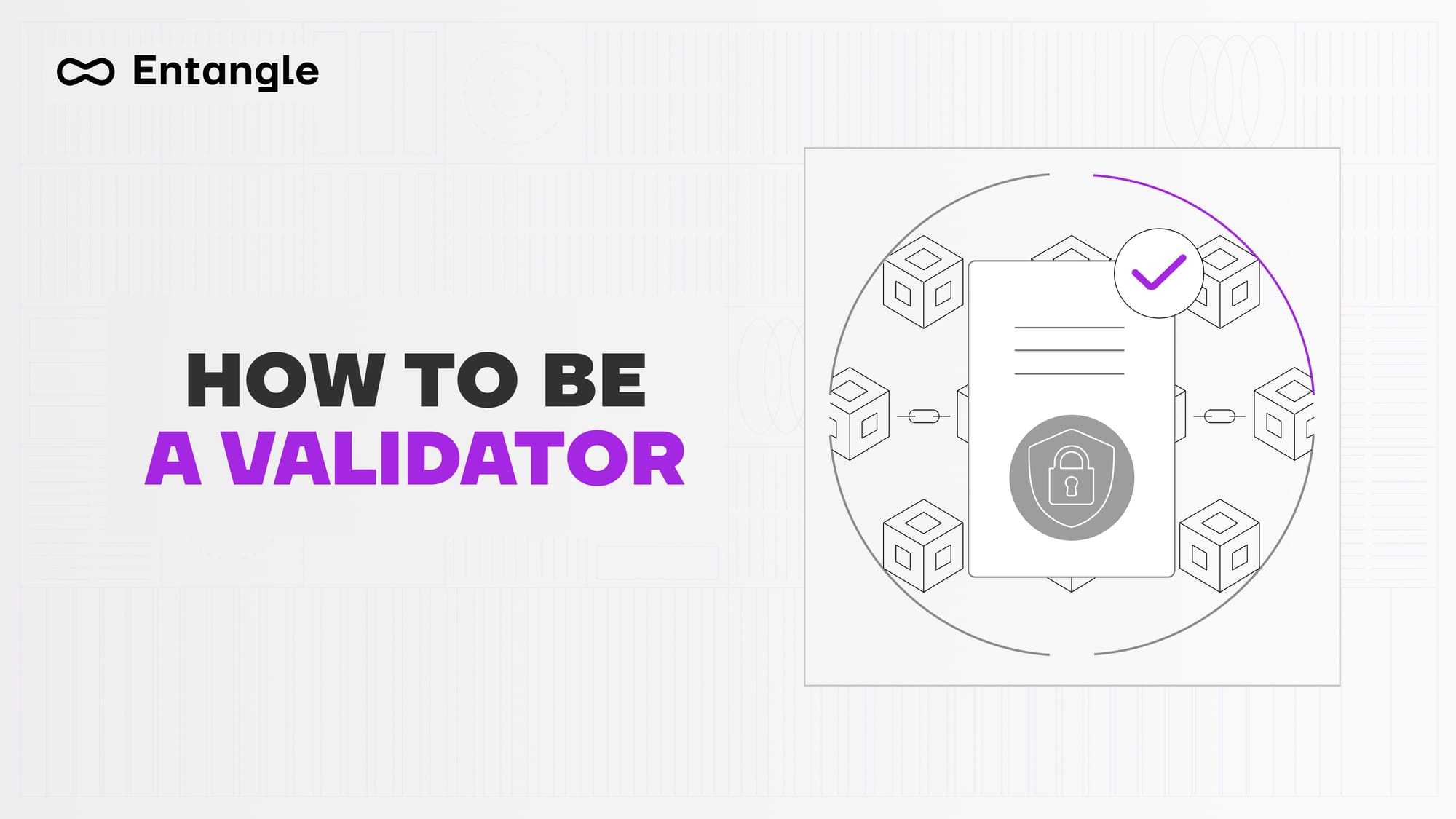How to be a Validator
Learn how to become a Validator on the Entangle Blockchain.

In the advent of establishing a decentralized scalable and cost-effective omnichain interoperability, Entangle’s mainnet launch embodies its Layer1 Blockchain. It is a vital communication hub that stores, verifies, and processes data. Constructed on the Ethermint platform, it merges Ethereum's functionality with Cosmos's scalability and interoperability, leveraging Tendermint Core's Proof-of-Stake (PoS) consensus for rapid transaction finality.
Developers benefit from the Blockchain's Web3 JSON-RPC interface, enabling a seamless transition of Ethereum-based applications to a more scalable and cost-effective environment. Also, smart contract deployment on Entangle is permissioned, requiring authorization for enhanced security.
The Entangle Blockchain architecture comprises three layers: the Application Layer for dApp interaction, the Modules Layer containing various functional components like staking, and the Tendermint Consensus Layer, which facilitates P2P connections and block consensus.
The network is suitable for high performance, enabling validators to earn competitive yields through the native token $NGL. It also automates service transactions, streamlining Photon messaging and Data Stream operations. Future upgrades aim to boost our blockchain efficiency and block processing speed.
Becoming a Validator on Entangle: A Quickstart Guide
Join Entangle as a Blockchain Validator. This role contributes to the network's interoperable capacity and trustworthiness. If you're considering joining the Entangle Validator ecosystem, you'll need to ensure your hardware and software are up to date and follow a series of technical steps to get set up.
Hardware and Software Requirements:
Begin by equipping yourself with the right tools for the job. Validators on the mainnet will need a system with at least 4 CPU cores, 16GB RAM, 500GB SSD, and a stable 100mbps internet connection. The testnet has slightly lower requirements and suits those looking to dip their toes. Ensure your machine runs on Ubuntu 22.04 and is equipped with essential software like Git, Golang, and Python, to name a few.
Setup Process:
Your journey starts with setting up your node. Clone the Entangle blockchain repository, build the project with 'make install,’ and check your installation. Initialize your node with a unique moniker and Entangle’s specific chain ID.
Wallet and Configuration:
Next, generate a wallet key. This key is your entry point to becoming a validator. You'll also need to update your configuration files and set persistent peers to stay connected with the network.
Launching and Synchronization:
With your configurations dialled in, start your node and sync it with the Entangle network. A simple command line check will confirm when you're in sync and ready to go.
Creating Your Validator:
Finally, to activate your validator status, ensure you have the required NGL tokens for staking. Create your validator with the specified command, adjust your parameters, and launch. Verify your addition to the validator set; you’re now pivotal in the Entangle ecosystem.
Conclusion
As a validator on the Entangle Blockchain, you are more than a network participant – you are a guardian of the omnichain future, a pioneer in a system that values integrity, efficiency, and innovation. Your technical acumen and commitment help secure a resilient and scalable network for users worldwide. With the right setup and careful attention to the steps, you'll contribute to a growing and secure ecosystem that values decentralization.
Ready to get started? Visit the Entangle documentation for detailed instructions, and join the community of validators today!